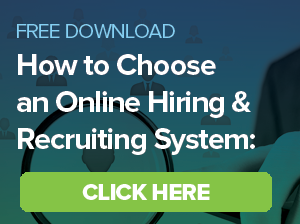In a 2012 national survey by Ask.com, “95 percent of Americans consider a job’s perks and benefits before deciding to either stay in a position or accept an offer.” In other words, business leaders will need to do more than offer a higher salary to make people want to work for you.
Health insurance, retirement benefits and paid time off are some of the typical benefits offered by employers, but companies like Zappos, Google and Facebook are offering unique perks and changing the way job seekers view benefits packages.
If your business is looking to differentiate in the competitive job market, here are five creative benefits you can consider offering employees to make your company more attractive to future job candidates:
1. Wellness Perks
Keeping your employees active and incentivizing them to do so will ultimately lead to a happier and healthier workforce. Some insurance providers will work with companies to create wellness programs that offer reimbursements to employees who visit the gym multiple times per month. Alternatively, stocking your company’s community kitchen with healthy food and snacks is another low-cost way to promote wellness and healthy eating.
2. Flexible Vacation Policies
Flexible vacation policies remove the concept of an allotted number of vacation days and let workers decide when and how much vacation time they need, within reason. If your company isn’t ready to let go of the reins just yet, there are other ways to incorporate flexibility and creativity into your vacation policy. For example, Intel rewards long-time employees with a two-month sabbatical, encouraging them to relax and recharge after seven years with the company. These employees still receive their regular paid vacation on top of their paid leave.
3. Floating Holidays
Like flexible vacation policies, floating holidays are another perk to attract more applicants with additional paid time off. Floating holidays are additional personal days that employees can use any time during the year without having to dip into their allotted vacation or sick time.
4. Time to Tinker and Innovate
Google championed one unique policy that has since been adopted by other tech companies like Apple and LinkedIn. The policy is called “20 percent time” and it encourages employees to spend about 20 percent of their time (or one day a week) experimenting with their own ideas. Google found that many products came to fruition during employees’ 20 percent time.
5. Paid Time off to Do Good
It is becoming more and more common for employers to offer paid time off for volunteerism as a way to increase employee engagement. The Society for Human Resource Management shared in the 2013 Employee Benefits Report that 20 percent of the companies surveyed offered paid leave for employees to volunteer in 2013. Job seekers who prefer to give back by volunteering their time and effort may see this as a competitive job perk for your company.
Branding and personalizing your company’s hiring efforts and online systems will give job seekers a better picture of what your organization has to offer in the way of culture and employee benefits.
photo credit: Alex E. Proimos via photopin cc








